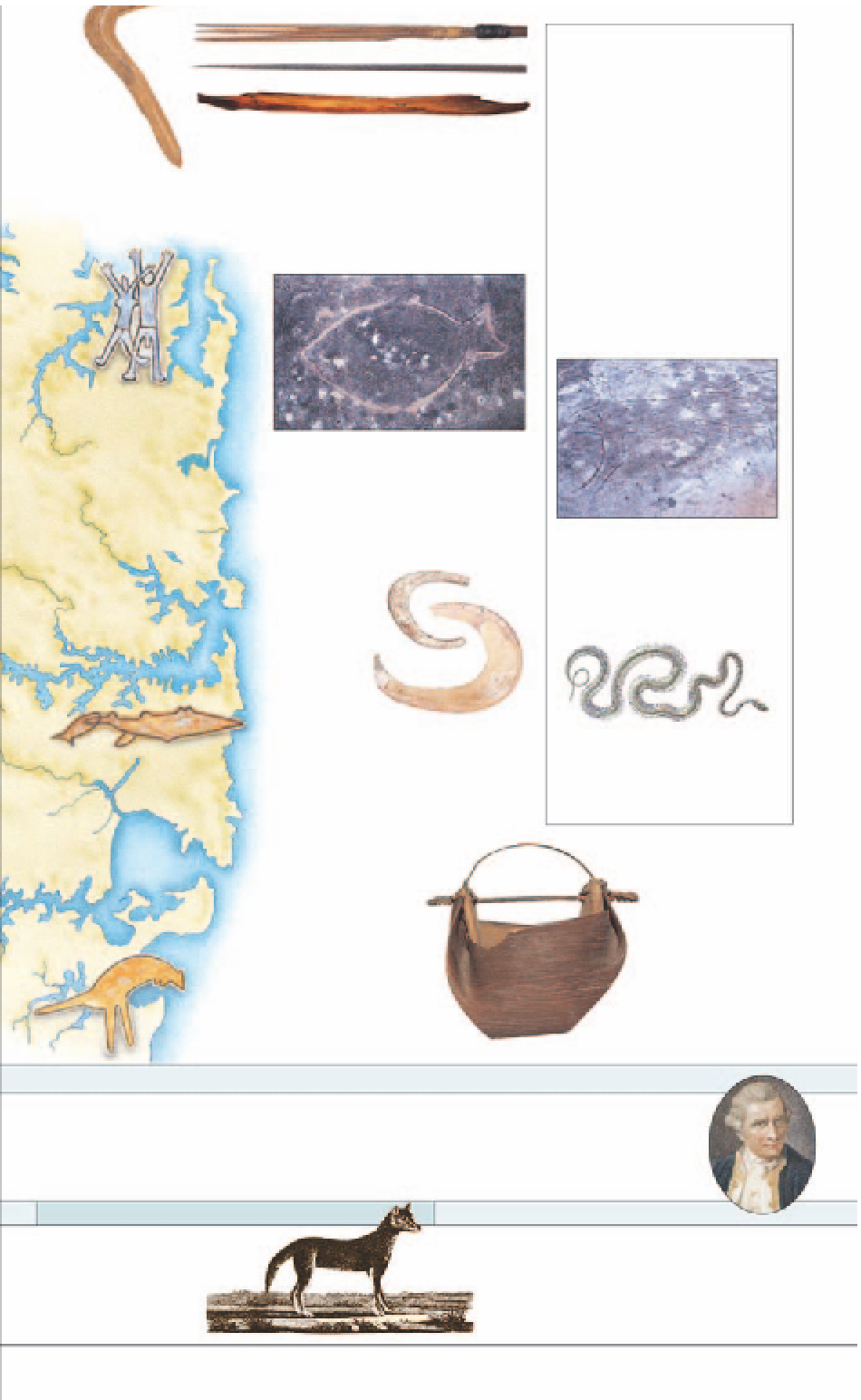Travel Reference
In-Depth Information
WHERE TO SEE
ABORIGINAL ROCK
ART AND ARTIFACTS
The soft sandstone of Sydney
was a natural canvas. Much
of the rock art of the original
inhabitants remains and can
be found on walking trails in
Ku-ring-gai Chase National
Park
(see pp154-5)
and the
Royal National Park
(p165)
.
The National Parks & Wildlife
shop at Cadman's Cottage
(p68)
has a range of pam-
phlets about Aboriginal sites.
Ku-ring-gai
is
named after
clans who lived
in this coastal dis-
trict. It is rich in
rock engravings.
Hunting and Fishing Implements
Multi-pronged Eora spears were used for
fishing, while canoes were shaped from a
single piece of bark. Boomerangs are still
used today for hunting and music making.
Fish Carving at West Head
This area in Ku-ring-gai Chase
has 51 figures and is acknow-
ledged as one of the richest sites
in the greater Sydney region.
Gumbooya Reserve
in sub-
urban Allambie Heights has a
collection of 68 rock carvings.
This human figure appears to
be inside or on top of a whale.
Bondi
is from
boondi
, the
sound of water
crashing. This
carving is of a
shark and fish.
Allambie
Heights
Bondi
Shell Fish-Hooks
Introduced from the
Torres Strait, these
hooks were ground-
down mollusc shells.
This python skeleton
is on view
at the Australian Museum
(see
pp88-9)
, along with a large
collection of Aboriginal artifacts.
Coogee
means
bad smell of
rotten seaweed
washed ashore.
Coogee
Maroubra
Water Carrier
These bags were
usually made of
kangaroo skin. The
skin was removed
in one piece and
either turned inside
out or tanned with the
sap from a gum tree.
Maroubra
comes either
from the
merooberah
tribe, or means place
where shells are found.
This carving
of a leaping
kangaroo is found in the
Royal National Park.
Bundeena
5,000 BC
Dingo
reaches Australia,
thought to have
been brought by
seafarers
Captain James Cook
8,000 BC
The
oldest returning
boomerangs are
in use in South
Australia
AD 1606
Dutch ship,
Duyfken,
records first
European sighting of the continent. Lands on
the eastern coast of Gulf of Carpentaria
10,000 BC
AD 1
AD 1700
Macassans search for
trepang or sea slugs off
Australia's north coast
Copperplate
print of a dingo
10,000-8,500 BC
Tasmania is separated
from mainland
Australia by rising seas
AD 1770
James Cook
lands at Botany Bay
















































